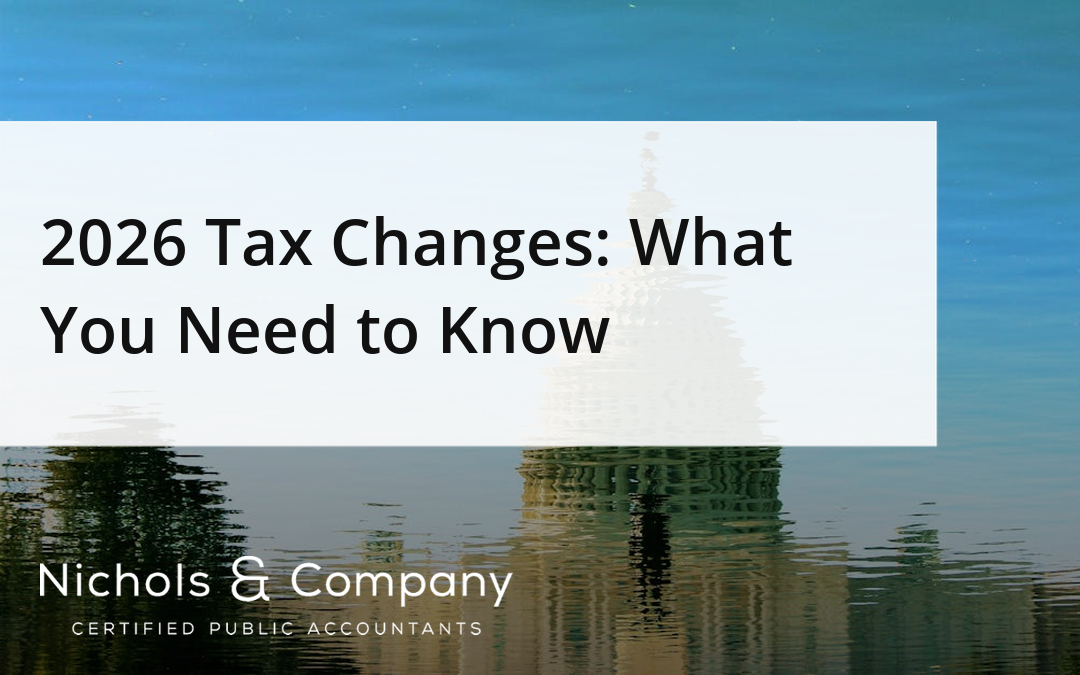The One Big Beautiful Bill Act (OBBBA) passed earlier this year brought significant changes to the tax landscape, and the IRS just released the 2026 inflation adjustments that build on these reforms.
While you shouldn't have to wade through complex tax bulletins and regulatory updates, we are happy to do so on your behalf. As your trusted tax advisors, our role is to translate these changes into personalized guidance tailored to your unique circumstances. If you are interested in exploring how any of these updates may impact you—not only in the current year but in coming years as well—please reach out to your accountant or our office at your earliest convenience.
These aren't just routine inflation adjustments. The OBBBA enhanced several key provisions beyond typical cost-of-living increases, creating new opportunities and considerations for tax planning. Below is a breakdown of what matters most and how we can help you take advantage of these changes.
Standard Deduction Increases
Good news – the standard deduction is going up again for 2026:
- Married filing jointly: $32,200 (up from $31,500 in 2025)
- Single filers and married filing separately: $16,100 (up from $15,750 in 2025)
- Head of household: $24,150 (up from $23,625 in 2025)
This means more of your income will be sheltered from federal taxes – a welcome adjustment as we continue to navigate economic changes.
Itemized Deductions: Permanent Changes for High Earners
The OBBBA made some significant permanent changes to itemized deductions that are worth understanding. The good news is that the old "Pease limitation" – which used to reduce itemized deductions for high-income taxpayers – has been permanently eliminated. This means most taxpayers can now claim the full amount of their qualifying deductions without the previous phase-out.
However, there is one new consideration: taxpayers in the highest tax bracket (37% rate) will face some limitation on the tax benefit they receive from itemized deductions. This affects single filers earning over $640,600 and married couples filing jointly earning over $768,700.
The bottom line: With higher standard deductions, fewer people will benefit from itemizing. But if you have significant mortgage interest, state and local taxes, charitable contributions, or medical expenses, it's worth evaluating. Your accountant will analyze your specific situation to determine whether taking the standard deduction or itemizing will provide the greater tax benefit.
Tax Brackets Stay Steady
The tax rates themselves remain unchanged, but the income thresholds for each bracket have been adjusted upward for inflation. The top rate stays at 37% for single filers earning over $640,600 ($768,700 for married couples filing jointly). Most middle-income earners will continue to see rates of 12%, 22%, or 24% depending on their income level.
Estate Planning Gets More Generous
For those with significant assets, the federal estate tax exclusion increases to $15 million per person for deaths occurring in 2026, up from $13.99 million in 2025. This is particularly important for business owners and high-net-worth individuals who are doing estate planning.
Business Fringe Benefits
The OBBBA included some significant enhancements for employers:
- Employer-provided childcare tax credit: Maximum credit increased from $150,000 to $500,000 ($600,000 for eligible small businesses)
- Transportation benefits: Monthly limit for qualified transportation and parking benefits rises to $340
- Health FSA contributions: Employee salary reduction limit increases to $3,400, with carryover amounts up to $680
Family-Focused Credits
Several credits that help families are also increasing:
- Adoption credit: Maximum credit rises to $17,670 for qualified expenses
- Earned Income Tax Credit: Maximum EITC for families with three or more children increases to $8,231
What This Means for Your Planning
These adjustments represent more than just keeping up with inflation – they're strategic opportunities. The enhanced standard deductions might change whether itemizing makes sense for you. The increased employee fringe benefits could influence decisions about employee benefits. And the higher estate tax exclusion creates new planning opportunities for business succession and family wealth transfer.
For high earners, the changes to itemized deduction limitations create new considerations for timing deductible expenses and exploring alternative strategies, particularly for charitable giving.
As always, tax planning isn't just about the current year – it's about positioning yourself strategically for the years ahead. These changes for 2026 should be considered alongside your overall financial strategy, business goals, and family planning needs. At N&Co, we believe in getting ahead of tax changes rather than reacting to them. We're here to help you navigate these changes strategically.
Contact your accountant or our office at 614-891-5423 to discuss how these changes might impact your specific situation and ensure you're positioned to take full advantage of what's ahead. Let us make your tax planning a little #LessTaxing.

